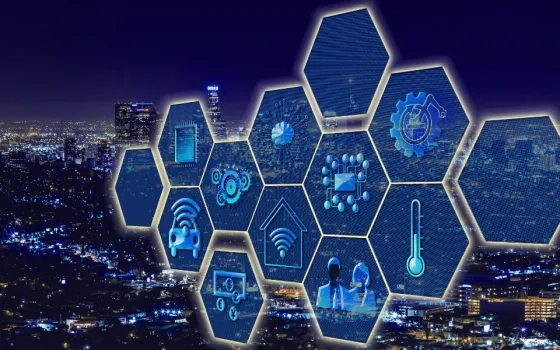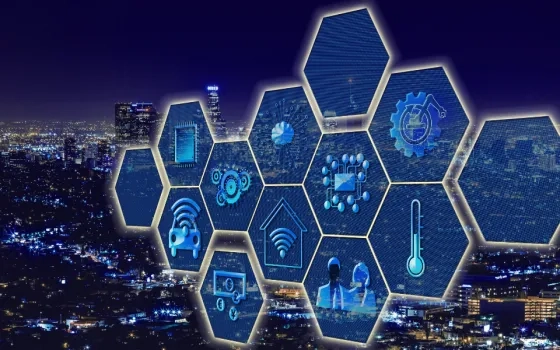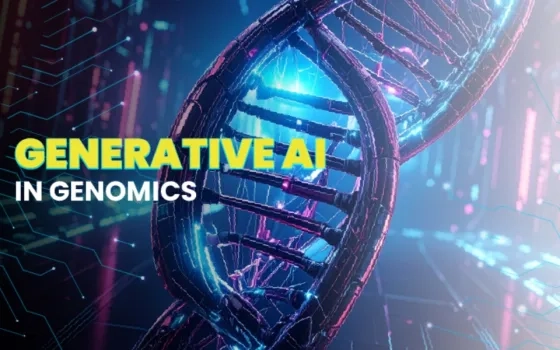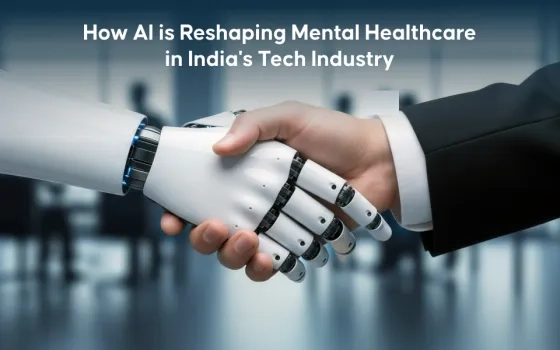21st century social dynamics along with technological developments have made today’s patient increasingly empowered. The Life Sciences and Healthcare business models are rapidly evolving, and we believe the future of the industry will be more organized around the consumers or patients, rather than the institutions.
The next decade or so will see fundamentally transformed business models – how diseases are identified, prevented, treated, and cured. The humongous stream of health data will pave way for highly personalized therapies, in contrast to traditional block buster (one size fits all) approaches. Ongoing digital transformation efforts enabled by big data, IoT, AIML, Cloud, Wearables, Multi-omics etc. will drive these changes.
We expect digital-led drug discovery, and virtual clinical trials will significantly reduce the timelines and cost of the drug development, which has been a major bottleneck of the industry. The patient generated real world data will feed-in-to and inform the drug development process. Novel biotechnology tools, combined with computational power shall provide pathways to more personalized treatment regimen.

Six Phenomenon shaping the Life Sciences Industry

Figure 1: Phenomenon shaping the future of Life Sciences
Patient centricity
With the rise in consumerism the consumer demand to participate in healthcare decision making is seeing a force. The movement towards personalized therapies, coupled with rising regulatory mandates to incorporate patient perspectives in product development, are driving patient centric strategies in the industry. As per Deloitte study, over next 20 years, all patient health data shall become accessible, with consent of patients who own it.
Life Sciences companies are making changes in their business models to increase patient touch points for providing holistic care. For instance, Teva Pharma launched a Digihaler, ProAir, that includes medicine, digital sensors, and a mobile App to provide improved patient experience.
New Therapeutic modalities
Developments in cell and gene therapy are leading the vision of targeted therapies and personalized treatments with several emerging biotechnology tools such as CRISPR- Cas9, mRNA, and RNAi. We all are aware about an entirely new type of mRNA-based vaccines developed by Pfizer and Moderna, that proved to be unusually safe and effective, and came as a panacea during the pandemic. The share of biologics in the pharma R&D pipeline is consistently increasing – 45% in 2022 compared to 28% in 2012.
Value based care
With the rise in cell and gene therapies and more personalized approaches the cost of treatment is seeing affordability issues. Payers, Providers and Pharma organizations are working toward innovating financial models – outcome-based pricing, tiered pricing, microfinancing, sustainability bonds – to address these challenges. Alongside, the electronic health records (EHR) data are seeing increased roles in assessing the claims data. Both patients and payers are pushing for health outcome-based contracts to deal with the rising healthcare costs.
Additionally, connected digital devices and digital therapeutics are being leveraged to track adherence rates, to create better value-based contracts.
Industry Convergence
Big Tech companies like Amazon, Apple and Google are venturing into and disrupting the traditional healthcare landscape.
Digitization of health records, exponential rise of wearables and virtual services is creating a vast amount of data. The big tech companies are transforming big data to provide valuable offerings. In 2021, Microsoft acquired Nuance communications in a whopping $19.6 billion deal. The Nuance’s AI based technology helps over 80% US hospitals in automating consultation process. Similarly, Apple Watch brings technology that provides clinical level accuracy in monitoring cardiac metrics.
As per Gartner report, 50% of all healthcare delivery organizations will include contributions from technology giants in diagnostics and treatment processes.
Collaborative play
Life sciences industry has started embracing a more collaborative way of working to overcome several challenges.
Big Pharma companies are using open innovation model to bring efficiencies in R&D process. For instance, AstraZeneca created a virtual neuroscience unit that sourced external innovation with shared costs, risks, and rewards. Eli Lilly’s OIDD platform, Merck’s Open compound sourcing are other such initiatives.
Similarly, the industry is also taking consortium approach to tackle key pharma challenges – The critical path for Parkinson’s, Coalition against major diseases, etc. are some examples where tens of leading Pharma companies are coming together to create better outcomes.
Data & Digital driven
With advancement and availability of several biomedical tools including genomics/multi-omics, biometric sensors/wearables and mobile apps, lot of data is being generated. More so the electronic health care records (EHRs), the research and clinical trials data and the social media data is increasingly getting accumulated. This combined pool of data, when properly analyzed, results in better determination and treatment of various ailments. This data holds the promise of the personalized medicine.
When we apply health informatic approaches on this data, it gets transformed and opens possibilities around predictive and preventive health – which is at the epicenter of a data-driven healthcare ecosystem. Apple and Google have developed health data platforms ResearchKit and Google Fit respectively for health statistics.
- By 2024, demand for LS sales representatives will be reduced by 30% through deployment of Biobots — which will in turn increase prescriptions by 5%. (Gartner)
- By 2024, 40% of life science companies will have active digital and decentralized trial programs, with as many as 30% of patient visits conducted remotely. (Gartner)
|
Latest developments and global best practices
|
Key Trends
|
Benefits
|
Instance
|
Enabling Technologies
|
|
AI-led Drug Discovery
|
AI-led drug discovery will reduce the timelines and bring efficiencies
|
GSK established an AI hub in London to discover new drugs
|
Artificial Intelligence, Machine Learning, Analytics
|
|
Biologics/ Cell & Gene Therapies
|
Industry transitioning from Blockbuster to Precision medicine model
|
Novartis, Gilead jointly financing of personalized medicine platform
|
Next Generation Sequencing, Artificial Intelligence
|
|
Virtual Clinical Trials
|
Clinical trials of the future to be virtual, hybrid and decentralized
|
Janssen & PRA launched truly 100% mobile virtual trial
|
Smart Phone, Mobile App, Wearable Sensors, Cloud
|
|
Thinking Supply Chain
|
Supply chain to be intelligent, predictive and transparent
|
Merck conducting POC of drone delivery with temperature - controlled payload
|
IoT, Cloud, Blockchain, RPA
|
|
Robotic Surgery
|
Future to increasingly involve robotics for precision and remote procedures
|
J&J launched newrobot-assisted surgery system “Ottava”
|
Robotics, Medical Engineering Services, Cloud
|
|
Flexible Manufacturing
|
Modular and continuous manufacturing with predictive controls
|
Pfizer’s “continuous manufacturing” micro-factories are no bigger than shipping containers
|
Analytics, IoT, 3D, Automation, Printing, Edge Computing
|
|
Digital Therapeutics
|
Digital therapeutics will bring holistic care and patient engagement
|
Novartis acquired digital therapeutics maker Amblyotech
|
Smart Phone, Mobile App, RWE, Wearables, Cloud
|
|
Connected MedTech
|
Connected ecosystem to drive remote testing & monitoring
|
Medtronic launched connected smart insulin pen
|
IoT, Wearables, Cloud, Cyber Security, 5G
|
|
Remote Physician Engagement
|
Physicians to engage remotely with sales reps and patients
|
Pfizer sales reps deloying virtual meeting platforms
|
IoT, Apps, AR/VR
|
|
Bionic Implants
|
Advances in bionics to have huge impact on patients’ lives
|
Medtronic working on Bionic Retinal implants
|
Medical Engineering Services, Artificial Intelligence, Analytics
|
|
Digital Twin/ Organ-on-a-chip
|
Digital Twin & Microphysiological Systems for drug pharmacology studies, digital cohort of real patients for trials
|
Siemens Healthineers conducting studies on a Digital Twin of heart
|
AI/ML, Analytics, Digital Twin, Tissue Engineering
|
|
Bio-Informatics/ Multi-Omics
|
Multi-omics studies will reveal deeper better insights into diseases
|
AstraZeneca and Eli Lilly R&D investments in Multi omics
|
NGS, Genomics, AI/ML
|
Conclusion
Life Sciences will evolve in a closely connected ecosystem of multiple industries blurring the traditional siloed boundaries. It will be shaped by larger ecosystem play in healthcare and evolving role of patient centricity on the lines of retail industry.
Emerging technologies especially Big Data, IoT, AI and wearables will catalyze the ecosystem transformation. From a traditional B2B industry, life sciences will become a mix of B2B and B2C industry. New modalities in treatments like cell and gene therapy will usher in era of more personalized treatment. Virtual and decentralized clinical trials will accelerate drug discovery cycles.
Transformation in patient engagements with possibilities like metaverse, virtual and augmented reality will revolutionize how doctors and patients interact. Along with this digital business transformation, innovative new business models, products and services like digital therapeutics will evolve. We believe leading Life Sciences organizations of the future will be patient-focused, data-driven and wellness and outcome-oriented.
















